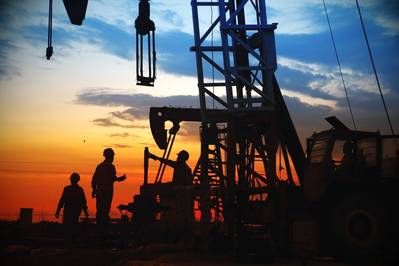U.S. oil and natural gas producers added jobs in November, the sector's first monthly employment increase in more than two years as drillers returned to the well pad due to a rally in crude prices, according to U.S. jobs data on Friday.
Combined oil and gas extraction and support services jobs increased by 3,300 to 384,300 in November, the first increase since September 2014 when employment in the sector peaked at 536,100, according U.S. Bureau of Labor Statistics (BLS) data.
"Probably around August to September last year we started to see an increase in the amount of need out there from companies that are looking to hire and that continued through the holidays, which is rare," said Jeff Bush, President of oil & gas recruiting firm CSI Recruiting in Texas.
"I think we're going to see a very busy year for hiring in oil and gas here in the United States."
Energy firms cut more than 155,000 jobs over the prior two years as they slashed the number of rigs drilling for oil from a record high of 1,609 in October 2014 to a six-year low of 316 in May, according to the BLS data and
Baker Hughes Inc's rig count.
Those cuts came during the biggest price rout in a generation, in which U.S. crude futures collapsed from over $107 a barrel in June 2014 to around $26 in February 2016 due to a global oil glut and lackluster demand for the fuel.
Crude prices have more than doubled from their February low to around $54 a barrel as the Organization of the Petroleum Exporting Countries (OPEC) and non-OPEC producers agreed to reduce output during the first half of 2017 in an effort to stem the oversupply.
Analysts said U.S. exploration and production (E&P) companies responded to those higher prices by adding more than 200 oil rigs over the past six months with even more spending expected on drilling over the next year or two.
Analysts at U.S. financial services firm Cowen & Co said this week in a note that capital expenditure tracking showed 25 E&Ps planned to increase spending by an average of 33 percent in 2017 over 2016.
That expected spending increase in 2017 follows an estimated 47 percent decline in 2016 and a 35 percent decline in 2015, Cowen said according to the 65 E&P companies it tracks.
(Reporting by Scott DiSavino and Devika Krishna Kumar; Editing by Marguerita Choy)











